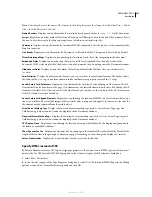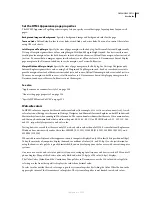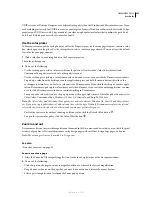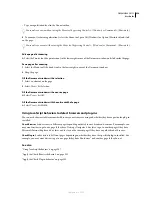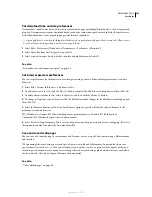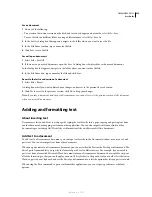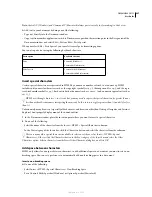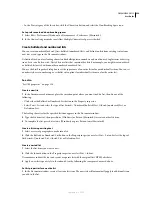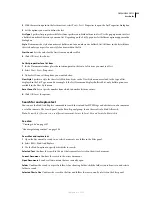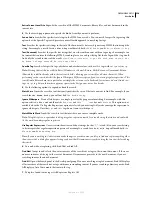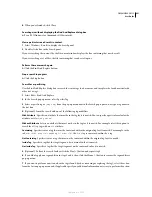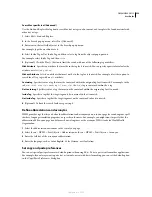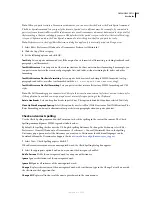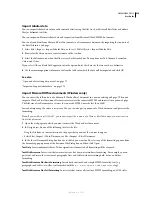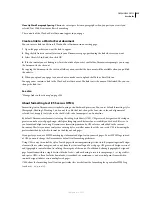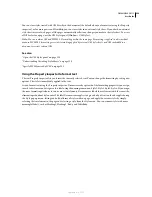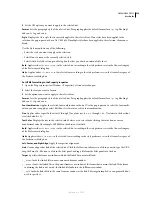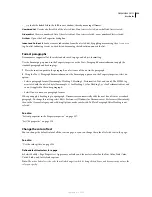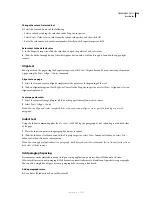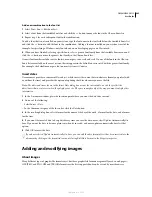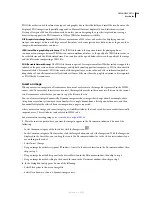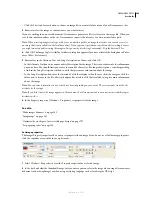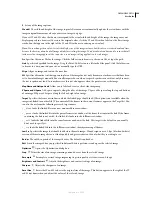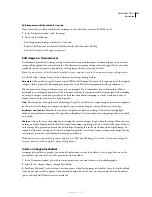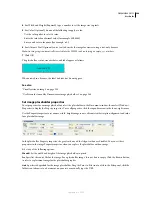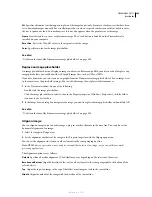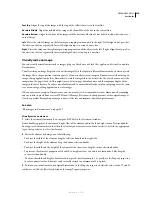
DREAMWEAVER CS3
User Guide
235
Clean Up Word Paragraph Spacing
Eliminates extra space between paragraphs when you paste your text if you
selected Text With Structure or Basic Formatting.
The contents of the Word or Excel document appear in your page.
Create a link to a Word or Excel document
You can insert a link to a Microsoft Word or Excel document in an existing page.
1
Open the page where you want the link to appear.
2
Drag the file from its current location to your Dreamweaver page, positioning the link wherever you want.
3
Select Create A Link, and then click OK.
4
If the document you are linking to is located outside of your site’s root folder, Dreamweaver prompts you to copy
the document to the site root.
By copying the document to the site’s root folder, you ensure that the document will be available when you publish
the website.
5
When you upload your page to your web server, make sure to upload the Word or Excel file, too.
Your page now contains a link to the Word or Excel document. The link text is the name of the linked file; you can
change the link text.
See also
“Manage links in the site map” on page 288
About formatting text (CSS versus HTML)
Formatting text in Dreamweaver is similar to using a standard word processor. You can set default formatting styles
(Paragraph, Heading 1, Heading 2, and so on) for a block of text, change the font, size, color, and alignment of
selected text, or apply text styles such as bold, italic, code (monospace), and underline.
By default, Dreamweaver formats text using Cascading Style Sheets (CSS). CSS gives web designers and developers
greater control over web page design, while providing improved features for accessibility and reduced file size. As
you format and align text using Dreamweaver formatting commands, CSS rules are embedded in the current
document. This lets you more easily reuse existing styles, as well as name the styles you create. CSS is becoming the
preferred method by which to format text and lay out web pages.
If you prefer, you can use HTML markup tags to format and align text in your web pages. To use HTML tags instead
of CSS, you must change the Dreamweaver default text formatting preferences.
Using CSS is a way to control the style of a web page without compromising its structure. By separating visual design
elements (fonts, colors, margins, and so on) from the structural logic of a web page, CSS gives web designers visual
and typographic control without sacrificing the integrity of the content. In addition, defining typographic design and
page layout from within a single, distinct block of code—without having to resort to image maps,
font
tags, tables,
and spacer GIFs—allows for faster downloads, streamlined site maintenance, and a central point from which to
control design attributes across multiple web pages.
CSS defines the formatting for all text in a particular class or redefines the formatting for a particular HTML tag
(such as
h1
,
h2
,
p
, or
li
).
September 4, 2007

